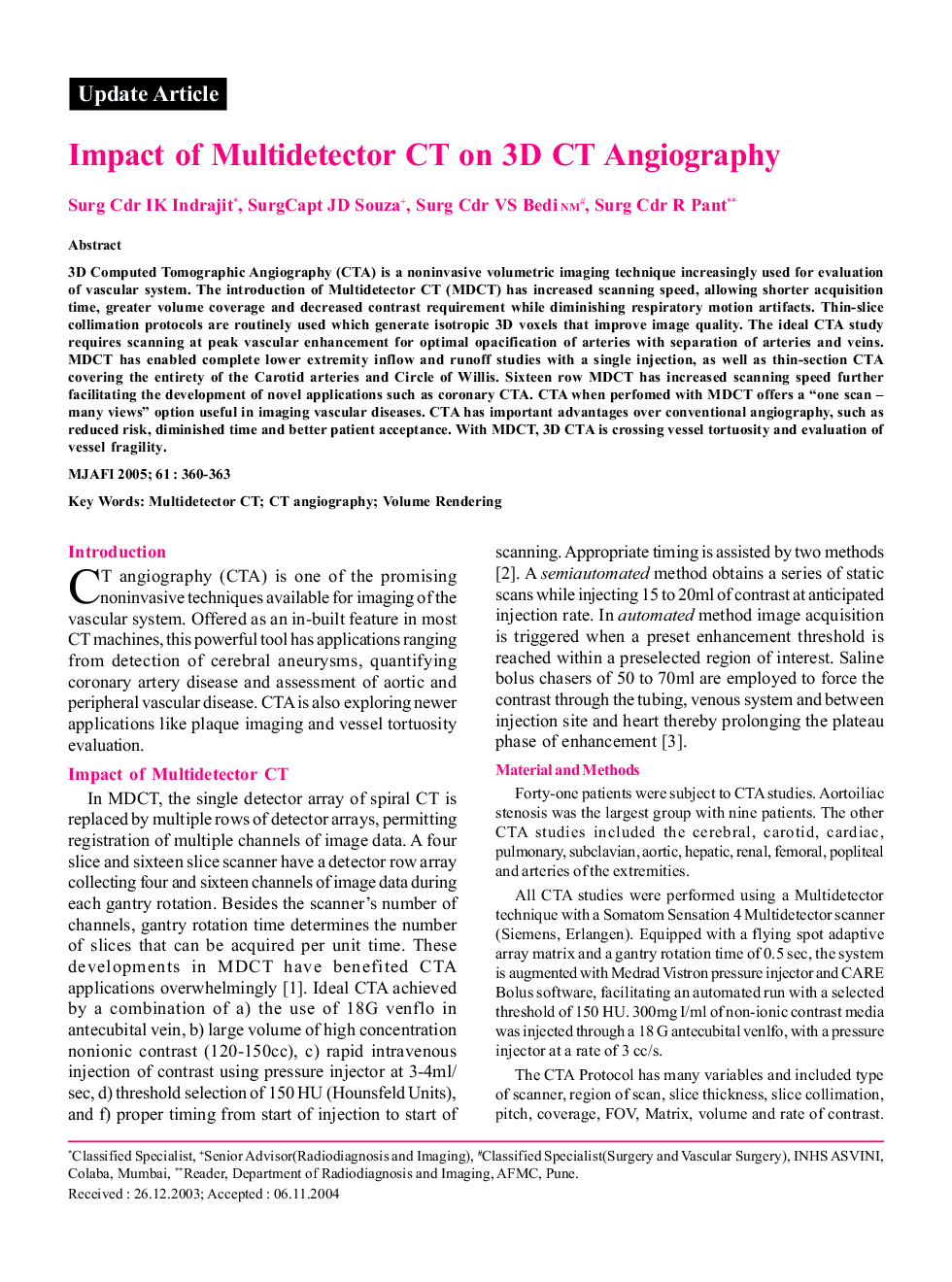| Article ID | Journal | Published Year | Pages | File Type |
|---|---|---|---|---|
| 9215797 | Medical Journal Armed Forces India | 2005 | 4 Pages |
Abstract
3D Computed Tomographic Angiography (CTA) is a noninvasive volumetric imaging technique increasingly used for evaluation of vascular system. The introduction of Multidetector CT (MDCT) has increased scanning speed, allowing shorter acquisition time, greater volume coverage and decreased contrast requirement while diminishing respiratory motion artifacts. Thin-slice collimation protocols are routinely used which generate isotropic 3D voxels that improve image quality. The ideal CTA study requires scanning at peak vascular enhancement for optimal opacification of arteries with separation of arteries and veins. MDCT has enabled complete lower extremity inflow and runoff studies with a single injection, as well as thin-section CTA covering the entirety of the Carotid arteries and Circle of Willis. Sixteen row MDCT has increased scanning speed further facilitating the development of novel applications such as coronary CTA. CTA when perfomed with MDCT offers a “one scan - many views” option useful in imaging vascular diseases. CTA has important advantages over conventional angiography, such as reduced risk, diminished time and better patient acceptance. With MDCT, 3D CTA is crossing vessel tortuosity and evaluation of vessel fragility.
Related Topics
Health Sciences
Medicine and Dentistry
Dentistry, Oral Surgery and Medicine
Authors
IK Indrajit, JD Souza, VS NM, R Pant,
